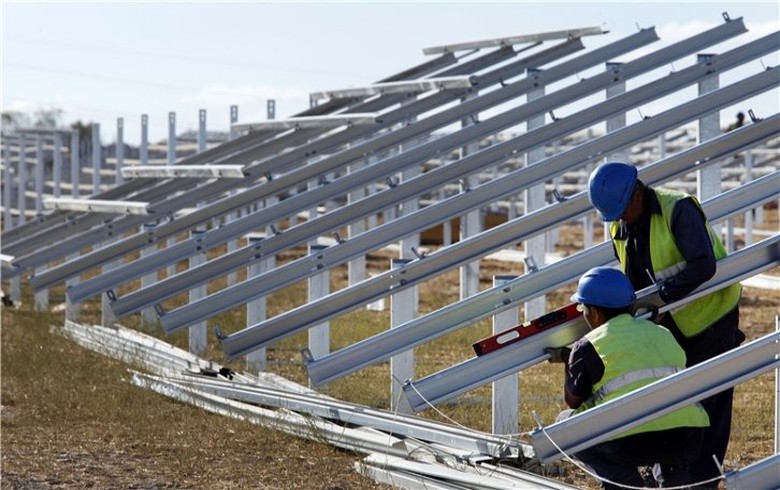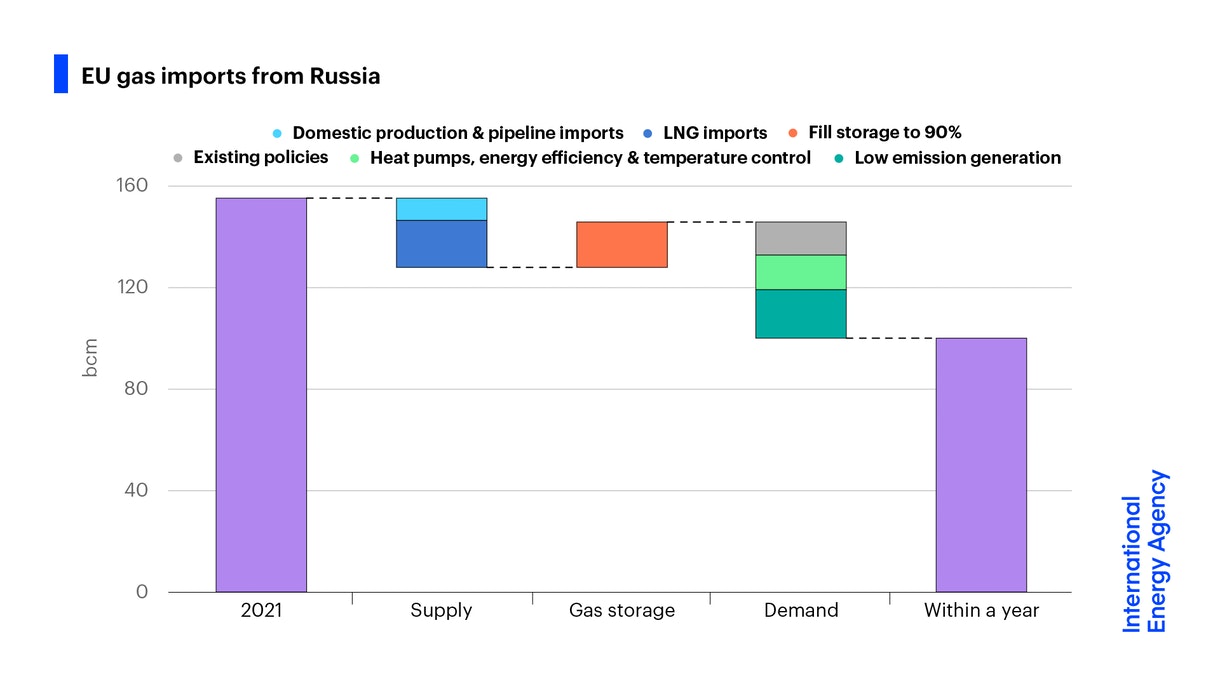
The EU imported 155 billion cu m of natural gas from Russia in 2021, which represents roughly 45% of the EU’s total gas imports and nearly 40% of its gas consumption. The IEA released a new report this month, a 10-Point Plan to Reduce the European Union’s Reliance on Russian Natural Gas, detailing the steps needed to reduce gas imports by more than 50 billion cu m within a year. The plan is fully consistent with the EU’s European Green Deal and the Fit for 55 package.
Cutting Russian gas imports by up to 80 billion cu m would be possible in the same timeframe, but it would require the use of more coal and possibly oil. These alternatives could displace large volumes of gas relatively quickly, but they are not aligned with the European Green Deal so they have not been in the 10-Point Plan below.
1. Do not sign any new gas supply contracts with Russia. [Impact: Enables greater diversification of supply this year and beyond]
2. Replace Russian supplies with gas from alternative sources [Impact: Increases non-Russian gas supply by around 30 billion cu m within a year]
3. Introduce minimum gas storage obligations [Impact: Enhances resilience of the gas system by next winter]
4. Accelerate the deployment of new wind and solar projects [Impact: Reduces gas use by 6 billion cu m within a year]
5. Maximise power generation from bioenergy and nuclear [Impact: Reduces gas use by 13 billion cu m within a year]
6. Enact short-term tax measures on windfall profits to shelter vulnerable electricity consumers from high prices [Impact: Cuts energy bills even when gas prices remain high]
7. Speed up the replacement of gas boilers with heat pumps [Impact: Reduces gas use by an additional 2 billion cu m within a year]
8. Accelerate energy efficiency improvements in buildings and industry [Impact: Reduces gas use by close to 2 billion cu m within a year]
9. Encourage a temporary thermostat reduction of 1 degrees Celsius by consumers [Impact: Reduces gas use by some 10 billion cu m within a year]
10. Step up efforts to diversify and decarbonise sources of power system flexibility [Impact: Loosens the strong links between gas supply and Europe’s electricity security]
“Reducing reliance on Russian gas will not be simple for the EU, requiring a concerted and sustained policy effort across multiple sectors, alongside strong international dialogue on energy markets and security,” the IEA said.

The Global Wind Energy Council (GWEC) and WindEurope welcomed most of the points in the agency’s plan, stressing that “only streamlined permitting procedures will allow for the acceleration of renewable energy deployment that is urgently needed to increase energy security in Europe and countries around the world.” However, the two organisations do not support the idea of temporary tax measures on electricity companies’ windfall profits.
“National Governments should not resort to taxing infra-marginal rents. Past examples in Spain, Romania, Bulgaria and Italy are resulting in market distortions, deterring investors, and failing to meet the stated objective of protecting consumers – all while at times leading to more emissions. They freeze new investments. Which in turn means less renewables. And less energy security,” GWEC and WindEurope warned in a joint response to IEA’s plan.
The two industry bodies believe that measures to alleviate the impact of high energy prices on consumers and businesses should be funded through energy taxes at times of windfall profits for fossil fuels companies, as well as carbon pricing instruments.
IEA says record solar and wind installations in 2022 and a return to average weather conditions are already expected to boost the EU’s output from these sources by more than 100 TWh, or 15% above 2021. A concerted policy effort to fast-track further renewable energy capacity additions could add to this 20 TWh over the next year, mainly from wind and solar. What is needed is “clarifying and simplifying responsibilities among various permitting bodies, building up administrative capacity, setting clear deadlines for the permitting process, and digitalising applications.”
The IEA also suggests that a short-term grant programme covering 20% of installation costs for rooftop solar could double the pace of investment and lift the annual output from such systems by up to 15 TWh.
Adding 35 TWh of renewables generation over the next year could displace 6 billion cu m of Russian gas.
Next week, the European Commission will propose a pathway for Europe to become independent from Russian gas as soon as possible.